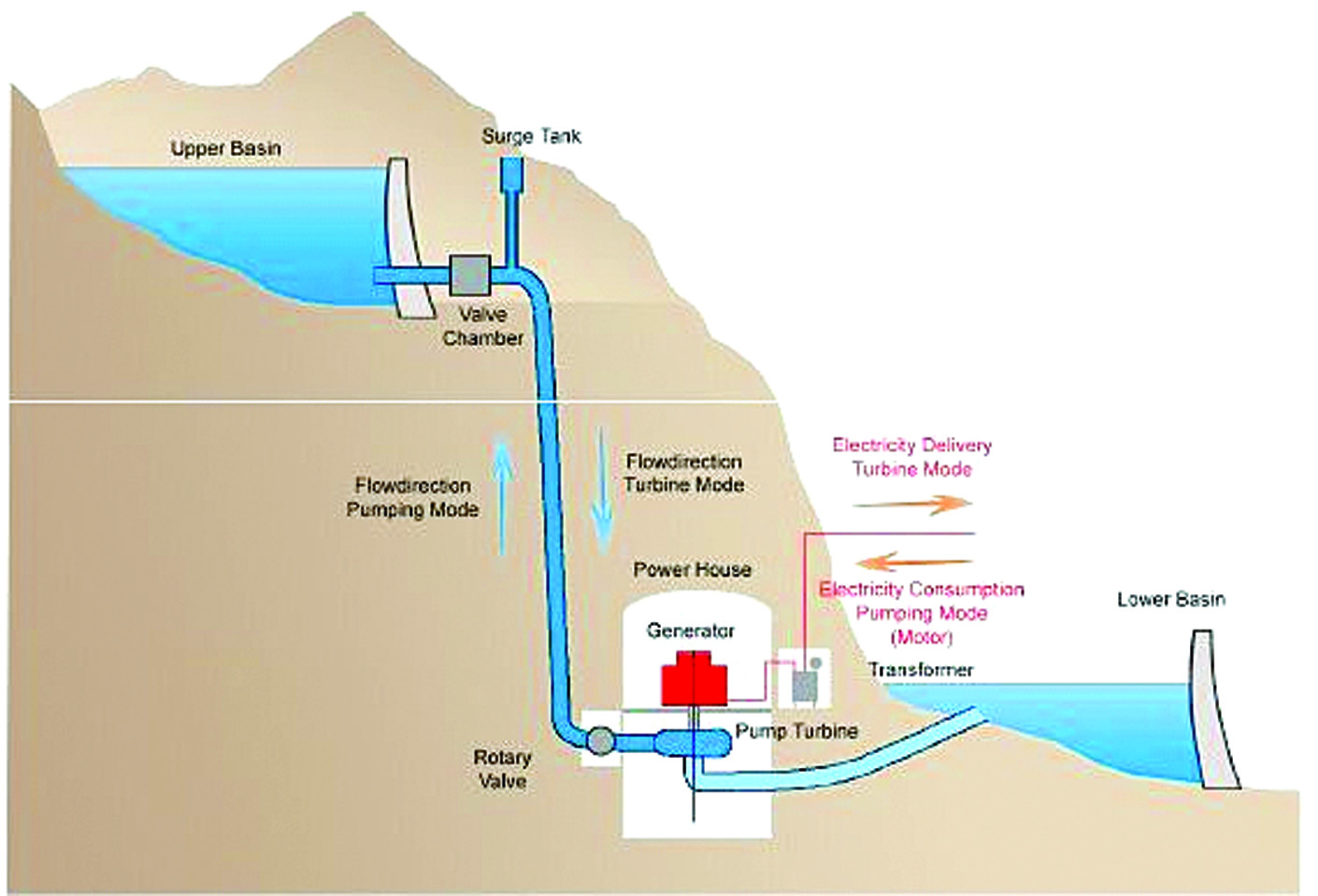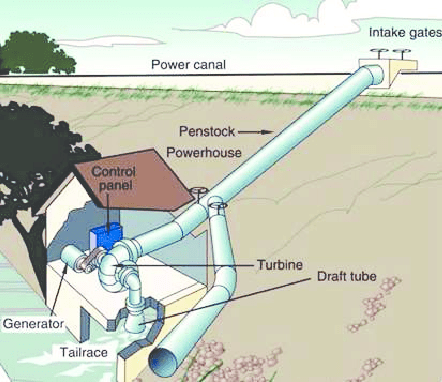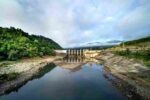The basic classification of the hydroelectric plant is based upon:

a) Size of plant
b) Storage of water available
c) Available of head
d) Nature of load
According to the size of the plant, hydroelectric plants are classified as:
Large- hydro: More than 100 MW capacity and usually feeding into a large electricity grid.
Medium- hydro: 15- 100MW capacity and usually feeding a single grid.
Small-hydro: 1 -15 MW capacity and usually feeding a single grid.
Mini-hydro: Above 100 KW capacities, but below 1Mw; either stand-alone schemes or more often feeding into the grid.
Micro-hydro:

5KW- 100KW, usually provided for small community or industry.
Pico-hydro: 100W – 5KW
1KW=1000W, 1MW=1000000W or 1000KW
According to the storage of water available, hydroelectric plants are classified as:
i) Run-off River plants without pondage (ROR type):
These types of plants consist of a narrow width river or canal into which the water flows. During the rain season, the ROR type of plant is good enough to produce electricity. The turbine and generator are placed at the downside of the river. Usually, the Kaplan turbine is used for the generation of electricity.
ii) Run-off River plants with pondage (Peaking run off the river or PROR type):
This is a hydroelectric generating plant in which an additional water reservoir is provided in order to support electricity production during peak loads and during off rainy season. This is similar to the general dam and reservoir type, but the capacity is limited to a few KW of electricity production. The tailrace water level needed to take care and should not allow rising up to the reservoir level. Because the reservoir provided in these plants is similar to small ponds.
iii) Reservoir Plants
It is a very general type of plant that we use. It has a huge dam and a huge reservoir. This type of hydroelectric plant can produce a high amount of electricity in MW throughout the year. This type of hydroelectric plant is generally utilized with low head turbines such as Pelton turbines in order to generate a sufficient amount of power.
According to the working head, the hydroelectric power plants are classified as:
i) Low head- Less than 30 meters of plants
- Design Standardization, Significance of Standardization, global associations for Standardization.
- What is Machine Design and Drawing?
This type of plant is usually set up in between the high flow river with low lead. There are no storage facilities for water in this plant. The power production is of fluctuation type throughout the year. These plants are run off river type. There is no surge tank installed because there is no high-pressure acts on the turbine blade. Kaplan turbine is the most used turbine for these types of plants.
ii) Medium-head (30m-300m) plants
These plants are located in mountain areas where there is a natural water reservoir created between mountains and stores water comes from mountains and from rain. The penstock pipe is directly attached to this water reservoir bay. There is no need for surge tanks in these plants. The reservoir bay itself acts as the surge tank. A surge tank is a pressure control tank. To know more about the surge tank, click here. In general, Francis turbine is mostly used in these types of plants.
iii) High head (Above 300m)
These plants are made where there are high altitude and elevation. These are the most popular type of hydroelectric plants throughout the world. These plants have a big dam and water reservoir in which water gets collected from mountains and from rain. The water is supplied to the penstock through the dam outlet. This plant consists of surge tanks before the penstock to prevent hammering into the penstock pipe due to the high velocity of water from the dam. These plants have better electricity production capacity throughout the year. The water control mechanism is provided; hence it can generate electricity as per demand. These plants are powered with Pelton turbines.
According to the nature of the load, hydroelectric plants are classified as:
i) Baseload plants
A baseload power plant is one that generates constant power throughout the year. It generates a fixed amount of electricity all times in all seasons except repair times. Therefore, the production cost is very cheap. The baseload power is determined by the load duration curve of the system for maximum load during a year. The load factor of such plants is high. The efficiency of these plants is around 35-40%.
Fluctuations, peaks, or spikes in power demand are taken care of by other types of smaller or bigger types of responsive hydroelectric power plants.
ii) Peak load plants
These are the types of hydroelectric plants that are made to fulfill the peak demands. Gas turbines, Storage, and pump storage power plants are used as peak load hydroelectric power plants. The efficiency of these plants is around 60-70%.
iii) Pumped storage power plants
These hydroelectric plants consist of pond/river at the tailrace. The water after use in the turbine gets stored in that pond. The stored water is get pumped back to high altitude reservoir for reuse. These plants generate a sufficient amount of electricity during the dry season and sell it at a little bit higher cost and earn money. That money finally, compensates the pumping water cost and provide profit to the owner. In these hydroelectric power plants, one pump/turbine unit and one motor/generator unit is installed. These both unit generates electricity in combination and also pump the water from a pond or river at tailrace to headrace water storage reservoir.
You may also like:
- Explain different types of safety followed inside the industry?
- What is Safety? Explain different types of safety.





